The Schroeder Center for Health Policy and W&M Sociology Host Dr. Jeanne Batalova
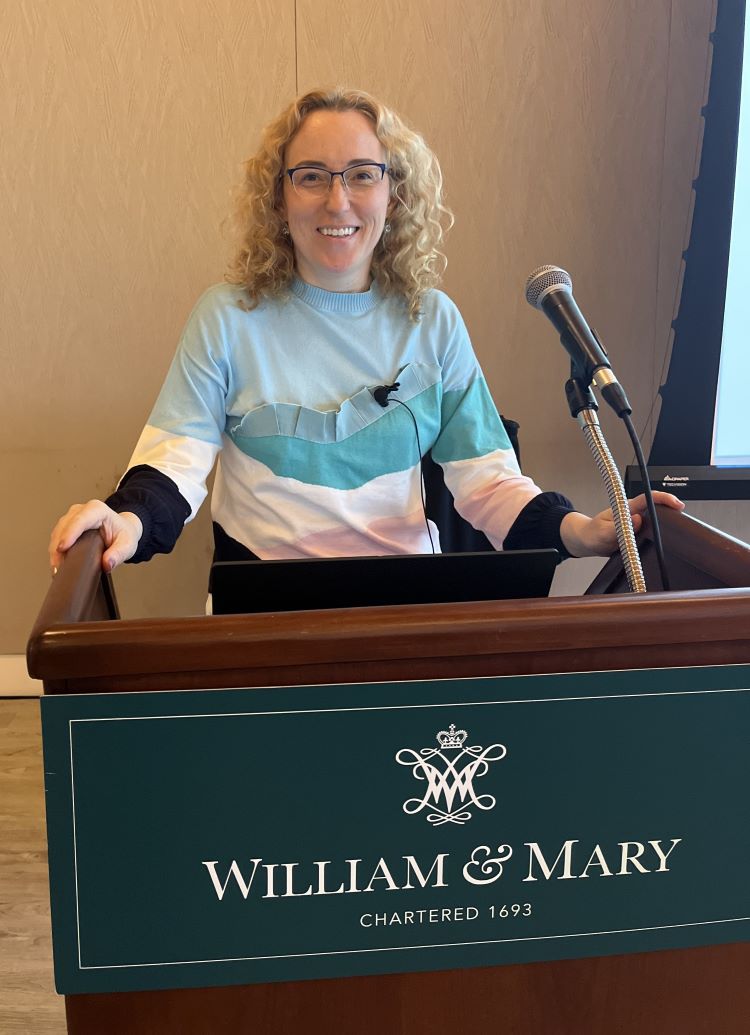 On October 9th, the Schroeder Center for Health Policy hosted with W&M Sociology, the last of three public panels, “The Role of Immigrants in the U.S. Healthcare Workforce,” to continue celebrating its 20th anniversary. Moderated by Jen Mellor, Paul R. Verkuil Professor of Economics and Director of the Schroeder Center for Health Policy, Eva Trakhtman ‘25 introduced Dr. Jeanne Batalova, Senior Policy Analyst at the Migration Policy Institute and manager of the Migration Data Hub. Drawing on her expertise on the impact of immigrants on society and labor markets; socio-economic mobility of first- and second-generation young adults; and the policies regulating immigration and integration of highly skilled workers into the United States’ workforce, Dr. Batalova provided an overview of the employment, underemployment, and unemployment of skilled migrant workers in the healthcare workforce before fielding questions from Dr. Mellor and the audience.
On October 9th, the Schroeder Center for Health Policy hosted with W&M Sociology, the last of three public panels, “The Role of Immigrants in the U.S. Healthcare Workforce,” to continue celebrating its 20th anniversary. Moderated by Jen Mellor, Paul R. Verkuil Professor of Economics and Director of the Schroeder Center for Health Policy, Eva Trakhtman ‘25 introduced Dr. Jeanne Batalova, Senior Policy Analyst at the Migration Policy Institute and manager of the Migration Data Hub. Drawing on her expertise on the impact of immigrants on society and labor markets; socio-economic mobility of first- and second-generation young adults; and the policies regulating immigration and integration of highly skilled workers into the United States’ workforce, Dr. Batalova provided an overview of the employment, underemployment, and unemployment of skilled migrant workers in the healthcare workforce before fielding questions from Dr. Mellor and the audience.
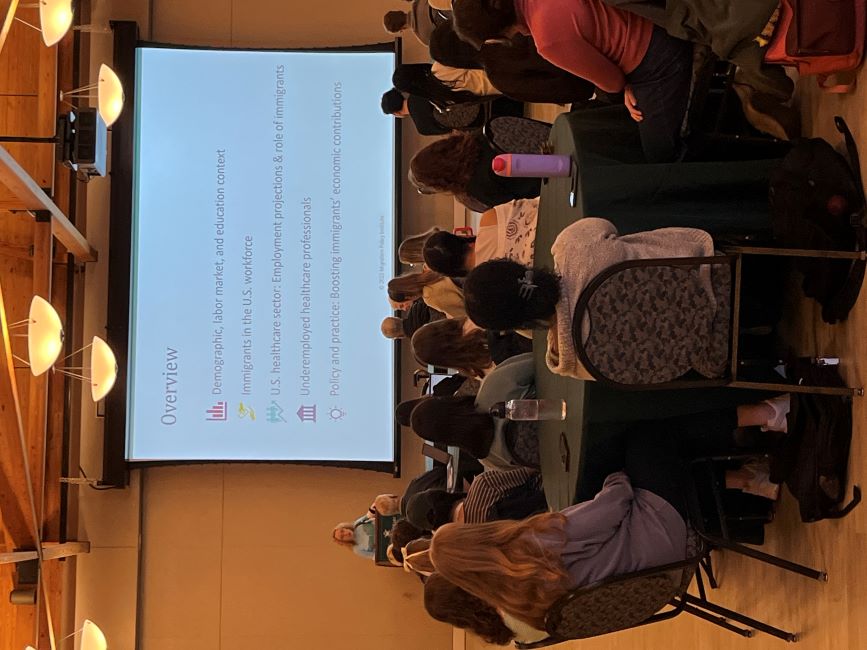 Dividing her presentation into five main points–demographics and labor markets, immigrants in the U.S workforce, employment projections in the U.S. healthcare sector, underemployment, and policy implications and trends–to portray educated migrants’ precarious situation in the United States’ workforce, Dr. Batalova’s first three points echoed the previous two panels’ concerns about the shortage of healthcare workers, but acknowledged the underutilization of migrant workers in the healthcare workforce. Much like Dr. Staiger and the healthcare administrators who the Schroeder Center hosted over the past month, Dr. Batalova attributed the shortage of healthcare workers to COVID accelerated retirement, teaching shortages, an aging workforce, and high barriers to entry. However, drawing on her own expertise in migration policy and practice, Dr. Batalova quickly noted that there are approximately 28.2 million migrant workers in the United States (17% of which have at least a bachelor’s degree) who are oftentimes underemployed or unemployed. Unlike many countries, the United States has a vast resource of people from different professional backgrounds to draw upon in times of need or crisis.
Dividing her presentation into five main points–demographics and labor markets, immigrants in the U.S workforce, employment projections in the U.S. healthcare sector, underemployment, and policy implications and trends–to portray educated migrants’ precarious situation in the United States’ workforce, Dr. Batalova’s first three points echoed the previous two panels’ concerns about the shortage of healthcare workers, but acknowledged the underutilization of migrant workers in the healthcare workforce. Much like Dr. Staiger and the healthcare administrators who the Schroeder Center hosted over the past month, Dr. Batalova attributed the shortage of healthcare workers to COVID accelerated retirement, teaching shortages, an aging workforce, and high barriers to entry. However, drawing on her own expertise in migration policy and practice, Dr. Batalova quickly noted that there are approximately 28.2 million migrant workers in the United States (17% of which have at least a bachelor’s degree) who are oftentimes underemployed or unemployed. Unlike many countries, the United States has a vast resource of people from different professional backgrounds to draw upon in times of need or crisis.
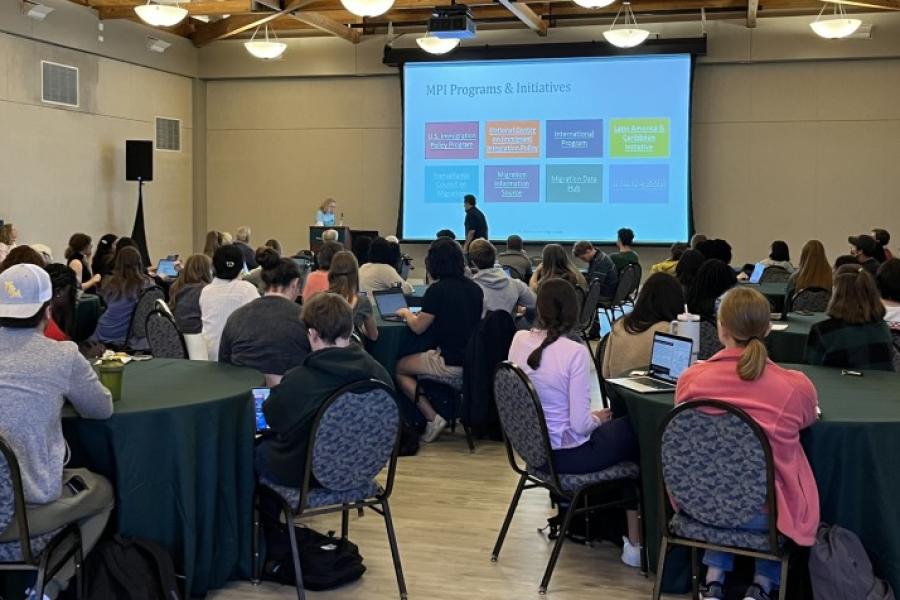 Dr. Batalova noted that immigrants composed 18% of the healthcare workforce (approximately 2.8 million healthcare workers). With immigrant workers composing up to 40% of the healthcare workforce in areas such as home health and personal care aids, the healthcare industry has experienced a growth in diversity that reflects an increased participation from Chinese, Filipino, Hispanic, Indian, Jamaican, and Pakistani communities. Though many of these communities are still underrepresented in terms of their population, the workforce’s increasing diversity since the 1990’s reflects the changing demographics of the United States. Though the United States manages to employ a large number of immigrants in the healthcare workforce, Dr. Batalova also pointed out that over 270,000 immigrants were either underemployed or unemployed in the healthcare sector due to federal and state requirements for licensure. Moreover, a large majority of these workers are bilingual - speaking English as well as their native language – and could help address underrepresentation in their communities.
Dr. Batalova noted that immigrants composed 18% of the healthcare workforce (approximately 2.8 million healthcare workers). With immigrant workers composing up to 40% of the healthcare workforce in areas such as home health and personal care aids, the healthcare industry has experienced a growth in diversity that reflects an increased participation from Chinese, Filipino, Hispanic, Indian, Jamaican, and Pakistani communities. Though many of these communities are still underrepresented in terms of their population, the workforce’s increasing diversity since the 1990’s reflects the changing demographics of the United States. Though the United States manages to employ a large number of immigrants in the healthcare workforce, Dr. Batalova also pointed out that over 270,000 immigrants were either underemployed or unemployed in the healthcare sector due to federal and state requirements for licensure. Moreover, a large majority of these workers are bilingual - speaking English as well as their native language – and could help address underrepresentation in their communities.
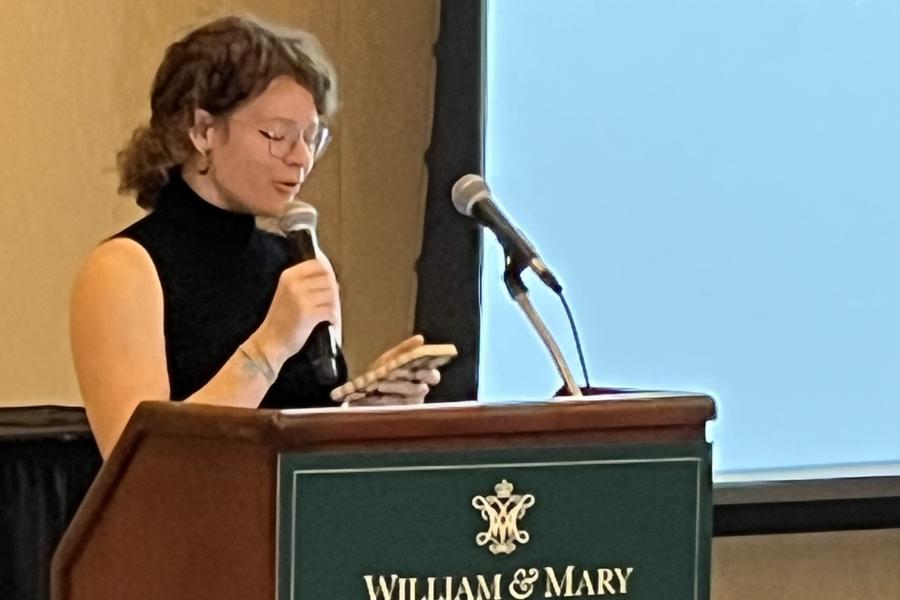 Even as the healthcare workforce is increasingly reliant on immigrant workers, federal and state policies on licensure create a “triple negative outcome” for these immigrants in which their home countries experience brain drain, local U.S. economies are unable to fill healthcare workforce shortages, and immigrants’ professional competencies deteriorate as they remain underemployed or unemployed. In the last and most detailed section of her presentation, Dr. Batalova addressed federal and state policy issues that prevent many skilled migrants from obtaining a job comparable to their home country. Highlighting the complexity of requirements which vary by state and occupation; lack of English proficiency of immigrant workers; the lack of English vocational language courses; and employer’s lack of awareness of visas and legal status, Dr. Batalova pointed out that very few immigrants had the time or the resources to obtain licensure. Moreover, even if they were to successfully navigate the licensure process, there is no guarantee that they would be hired. Further complicating this issue, many immigrants currently in the country fall under a liminal status such as DACA or TPS which adds to the barriers they face obtaining a job. Without an avenue to continue their professional expertise and practice, these highly skilled and qualified workers face the deterioration of professional competencies which could be valuable in a time of shortage.
Even as the healthcare workforce is increasingly reliant on immigrant workers, federal and state policies on licensure create a “triple negative outcome” for these immigrants in which their home countries experience brain drain, local U.S. economies are unable to fill healthcare workforce shortages, and immigrants’ professional competencies deteriorate as they remain underemployed or unemployed. In the last and most detailed section of her presentation, Dr. Batalova addressed federal and state policy issues that prevent many skilled migrants from obtaining a job comparable to their home country. Highlighting the complexity of requirements which vary by state and occupation; lack of English proficiency of immigrant workers; the lack of English vocational language courses; and employer’s lack of awareness of visas and legal status, Dr. Batalova pointed out that very few immigrants had the time or the resources to obtain licensure. Moreover, even if they were to successfully navigate the licensure process, there is no guarantee that they would be hired. Further complicating this issue, many immigrants currently in the country fall under a liminal status such as DACA or TPS which adds to the barriers they face obtaining a job. Without an avenue to continue their professional expertise and practice, these highly skilled and qualified workers face the deterioration of professional competencies which could be valuable in a time of shortage.
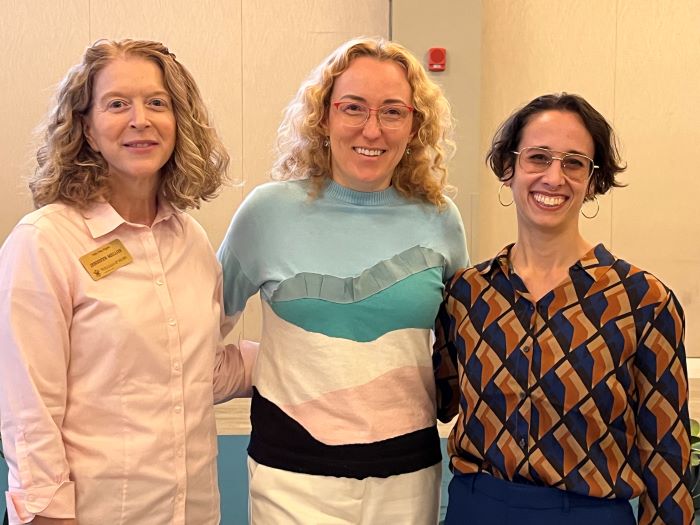 Though federal and state policies have prevented many immigrant workers from obtaining comparable work in the healthcare sector, Dr. Batalova noted several federal, state, and private initiatives that are working to address this critical issue. Starting at the federal level, Dr. Batalova noted that the White House recently announced a Task Force on New Americans and Congress had also drafted three bills to aid skilled immigrant workers. Though federal interest in the employment of skilled immigrants is a step in the right direction, Dr. Batalova noted that states have the most power to change licensure and certification processes. In this regard, Illinois’ recent decision to issue limited physician licenses to immigrants in underserved areas serves as an excellent model for better utilizing immigrants in healthcare. Though these workers cannot practice independently from a fully licensed physician, they are allowed to practice honing their professional skills while learning vocational English. In return, the state is able to expand its workforce and address shortages in underserved areas. Dr. Batalova also noted that Washington state had a similar program. Lastly, Dr. Batalova pointed to private institutions who have established programs to employ immigrant workers. For instance, New York-Presbyterian Hospital and Upwardly Global have established a mid-career internship program for highly skilled immigrants that screens and prepares workers with vocational English and professional courses before they work in the hospital. This is a win-win situation as immigrants are able to return to work and pursue advancement in their career and the hospital gains an internationally-skilled workforce to better serve an increasingly diverse population. With these recent developments, Dr. Batalova ended her presentation on a hopeful note.
Though federal and state policies have prevented many immigrant workers from obtaining comparable work in the healthcare sector, Dr. Batalova noted several federal, state, and private initiatives that are working to address this critical issue. Starting at the federal level, Dr. Batalova noted that the White House recently announced a Task Force on New Americans and Congress had also drafted three bills to aid skilled immigrant workers. Though federal interest in the employment of skilled immigrants is a step in the right direction, Dr. Batalova noted that states have the most power to change licensure and certification processes. In this regard, Illinois’ recent decision to issue limited physician licenses to immigrants in underserved areas serves as an excellent model for better utilizing immigrants in healthcare. Though these workers cannot practice independently from a fully licensed physician, they are allowed to practice honing their professional skills while learning vocational English. In return, the state is able to expand its workforce and address shortages in underserved areas. Dr. Batalova also noted that Washington state had a similar program. Lastly, Dr. Batalova pointed to private institutions who have established programs to employ immigrant workers. For instance, New York-Presbyterian Hospital and Upwardly Global have established a mid-career internship program for highly skilled immigrants that screens and prepares workers with vocational English and professional courses before they work in the hospital. This is a win-win situation as immigrants are able to return to work and pursue advancement in their career and the hospital gains an internationally-skilled workforce to better serve an increasingly diverse population. With these recent developments, Dr. Batalova ended her presentation on a hopeful note.
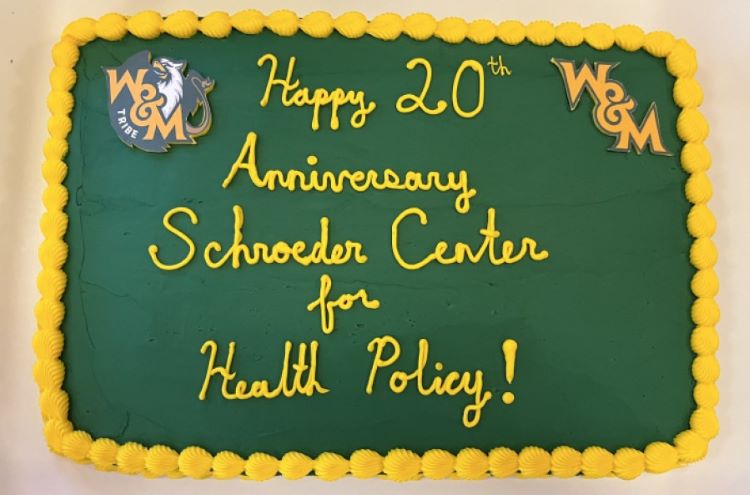 Though the United States’ healthcare workforce still has a long way to go to utilize the specific skills and experiences immigrants bring, the continual work by federal, state, and private institutions to incorporate these experiences into healthcare is a promising sign of growth. By better utilizing immigrants’ bilingual skills, cultural experience, and professional expertise, the United States can grow its healthcare workforce in a time of critical need while addressing areas of underrepresentation due to shifting demographics.
Though the United States’ healthcare workforce still has a long way to go to utilize the specific skills and experiences immigrants bring, the continual work by federal, state, and private institutions to incorporate these experiences into healthcare is a promising sign of growth. By better utilizing immigrants’ bilingual skills, cultural experience, and professional expertise, the United States can grow its healthcare workforce in a time of critical need while addressing areas of underrepresentation due to shifting demographics.
 Skip to main content
Skip to main content
